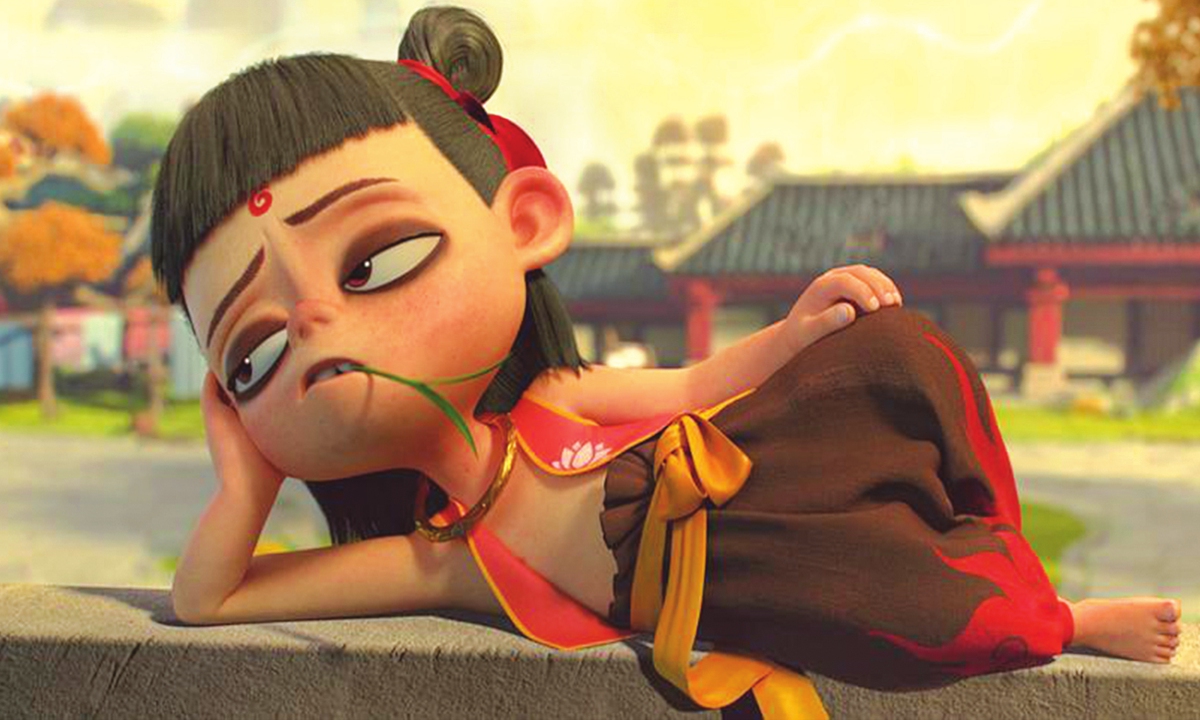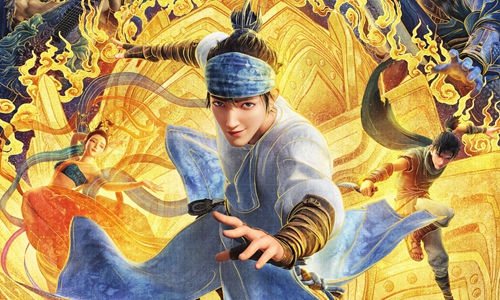
Promotional material for Chinese animated films New Gods: Yang Jian (center) and Ne Zha (bottom left) Photos: Courtesy of Maoyan
Editor's Note:As we are about to bid farewell to the year 2022, a year where we lived through happiness and accomplishments although life was accompanied by a pandemic, the Global Times staff of life and culture will share our observations on the cultural life of the whole year to offer a platform to remember what the country has accomplished in the cultural sector and the cultural life that we, the ordinary people, have enjoyed, and to help everyone get ready to embrace the New Year with hope and strength.
"In 2022, Chinese animation marks its centenary. The total output value of the industry now exceeds 2.21 trillion yuan ($31.8 billion)... Animation has become more than a content carrier," Li Ni, a vice president of Chinese video sharing platform Bilibili, noted at a press conference for new original animation works held in October.
One hundred years ago, the Wan Brothers, four young artists looking to make their mark on the world, took inspiration from flip books and traditional Chinese shadow puppetry to make China's first work of animation in a small alley in Shanghai's Zhabei district.
Today, there are nearly 1,000 active studios in China, among which more than 120 of them are capable of producing high-quality animation. The industry brings together hundreds of thousands of people from all over the country, including artists, cartoonists, special effect technicians, producers and screenwriters.
Imagination and tradition have come together to allow the Chinese animation industry to boom. In some films classic figures from traditional Chinese folk tales such as the
Monkey King,
Ne Zha and
White Snake are brought to life, while other works set their sights on distant parts of the galaxy by depicting the future of humanity.
"People's demand for animation is increasing. The success of previous works, especially the 2019 hit fantasy film
Ne Zha, has made investors recognize the potential of animation. And Chinese studios are making progress when it comes to technical know-how and creative ideas," Shi Chuan, a vice chairman of the Shanghai Film Association, told the Global Times.
Spiritual coreDuring the summer of 2022, Chinese animated film New Gods: Yang Jian hit cinemas. Like
Ne Zha, the film took inspiration from folk stories and literature to adapt the story of another mythological figure. The film has earned a total of 550 million yuan at the box office, making it the second-highest earning animated movie of 2022.
Similar to previous successful works such as the 85-minute-long animated film
Monkey King: Hero is Back, 2019's
Ne Zha and the
White Snake series of films, the 2022 animated movie is also rooted in traditional Chinese culture, creating a fantasy world integrating Chinese cultural elements with modern machines such as aircraft and traffic lights.
Earning more than $725 million at the Chinese mainland box office,
Ne Zha was 2019's highest-grossing film in China. Still sitting at fourth place on the all-time highest-earning chart, the film is seen as a miracle in the animation industry. The film was made by a huge production team of around 1,600 people, and the 1,318 special effects shots in the film were animated by more than 20 special effects teams across the country.
"Chinese animation is returning to Eastern aesthetics and
Ne Zha and Yang Jian are proof. The return is due to the upgrading of our animation technology. Only better production technology can lay a solid foundation for finding our own characteristics," Shi Wenxue, a Beijing-based film critic, told the Global Times, noting that Chinese animators are able to tap into the dramatic factors of traditional Chinese stories and adapt them for today's young audiences.
Younger generations of Chinese animation makers have been insisting on making tradition their spiritual core. For instance, Zhu Xiaopeng, a sci-fi animator and member of the production team SolidStudio, told the Global Times that he has been working hard to merge traditional Chinese culture and his ideas about the future to create a unique form of sci-fi animation with a Chinese flavor.

Promotional material for Chinese animated films New Gods: Yang Jian (center) and Ne Zha (bottom left) Photos: Courtesy of Maoyan
Pursuing higher qualityThe recent release of the animated TV series
Three Body, an adaptation of the second book in Chinese writer Liu Cixin's hit sci-fi trilogy
The Three-Body Problem, has been great for the animation industry, attracting millions of online viewers.
Many reviews say that the series and its stunning scenes demonstrate just how much the Chinese animation industry has improved.
Some young animation makers told the Global Times that as industry insiders, they have witnessed the development of the technology used in animation production and are confident that the industry will continue to make higher quality works as today's animators have mastered these new tools of the trade.
The industry is still facing some challenges, such as writing better stories and coming up with more creative ideas, animators say. Additionally, the industry needs more brilliant works that convey positive values.





